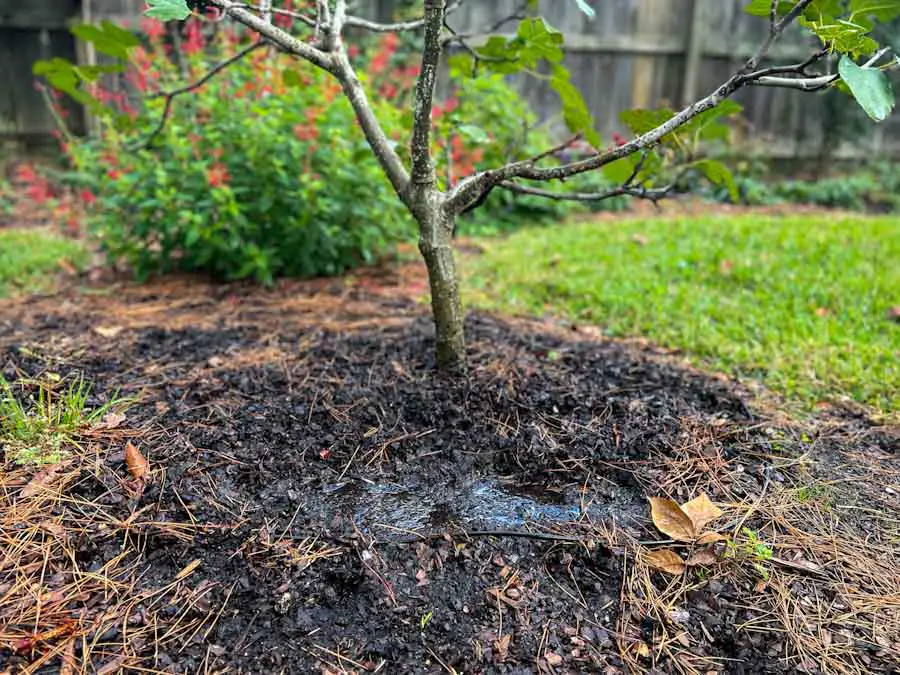
We may receive commissions from purchases made through links in this post, at no additional cost to you.
Did you know the most common reason for the death of fruit trees is – poor soil drainage? Whether it’s claggy, heavy clay soil where the water sits for days on end after a rain, or dry, grainy sand that seems to allow water through as if someone had pulled a plug – poor drainage is the culprit for many struggling fruit trees.
There are several ways to improve the drainage of your soil, but there are some limitations, too. Every yard, orchard, or garden has soil with distinct characteristics. The more you discover about your own plot of land, the better you’ll be able to work with what you have, decide what to plant where, and adjust the soil for each planting area.
Both slow- and fast-draining soil can be improved by adding plenty of organic matter, such as compost, pine bark, or shredded leaves. Most fruit trees require well-drained soil so their roots can access necessary water and nutrients. Ideally, plant fruit trees that are compatible with the native soil.
The good news is, poor soil drainage is a solve-able problem. But first, read on to learn about what constitutes as good drainage, why it’s so crucial for fruit trees, and how to check the drainage of your own soil.
Table of Contents
- Soil Drainage 101
- Signs of a Drainage Problem
- How to Check Your Soil Drainage
- Planting Fruit Trees in Poorly-Drained Soil
- Fixing Drainage Under Already-Planted Trees
- What fruits grow well in poorly-drained soil?
Soil Drainage 101
What does “well-drained soil” mean?
Well-drained soil is composed of various-sized particles which allow air and water to freely flow. It contains enough organic material to hold on to some moisture which can then be accessed by plant roots. Soil is “well draining” if it absorbs puddles easily, stays moist for a while, but can fully dry over time.
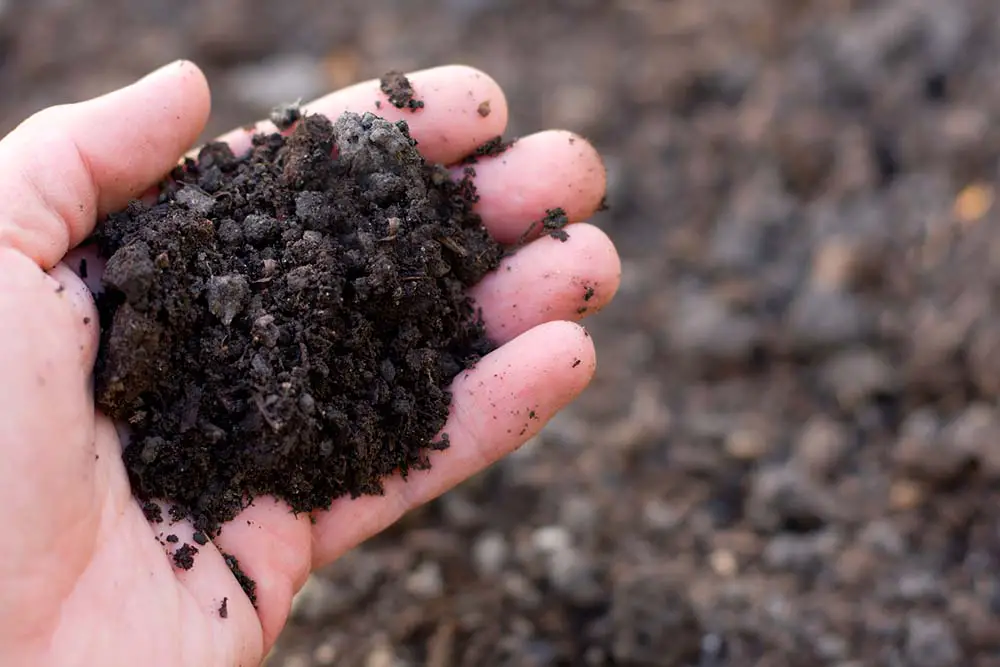
Good overall soil health is due to the combination of several factors. Microbes, bacteria, worms, and other biological organisms break down nutrients and make them available to plants. They also aerate the soil, improve its structure, and even protect against soil-borne pathogens.
The chemical composition of the soil includes its pH, level of salinity, available nutrients, and any residues from pesticides or other contaminants.
And, of course the physical characteristics of the soil play an important role in soil health. These include the particle sizes; percentages of clay, silt, and sand; and the ability for the soil to both store and release water, air, and nutrients.
The ideal well-drained, healthy soil allows water to enter easily, stick around long enough for the plant roots to get what they need, and then drain away. Pore spaces (the spaces between soil particles) can then allow air to pass through – both oxygen and other gasses that are byproducts of decomposition.

Curious about any garden-related terms? Click on a highlighted word in the text, or visit The Fruit Grove Glossary to find out more.
Things that Affect Drainage
- Soil compaction. If there is not enough space between soil particles for water and air to pass through, then the roots will suffocate. When water sits for too long in one place, or when heavy equipment (or feet) tamp down the soil while it is saturated, the soil gets compacted. The lack of water and/or oxygen will restrict root growth, stunting or killing the tree.
- Particle size. Soil with a high percentage of clay will have the most trouble draining. Clay has minuscule particles only about 0.002 mm in length. Silt, sediment that is made up of rock and minerals, is the next smallest. The largest soil particles are typically from sand. Well-drained soil (also called loam) has a balanced combination of clay, silt, and sand, plus organic matter.
- Organic matter. The amount of organic matter present in the soil has a huge effect on drainage. Think of organic matter as the “living, dead, and very dead” things in the soil (I did not coin that phrase, but I love it!). These include plant and animal residue, decomposing plants and animals, and living or dead microorganisms. Organic matter is essential for water retention in soil (which can then be released to the roots as needed), but it also improves the soil structure and allows water to move around.
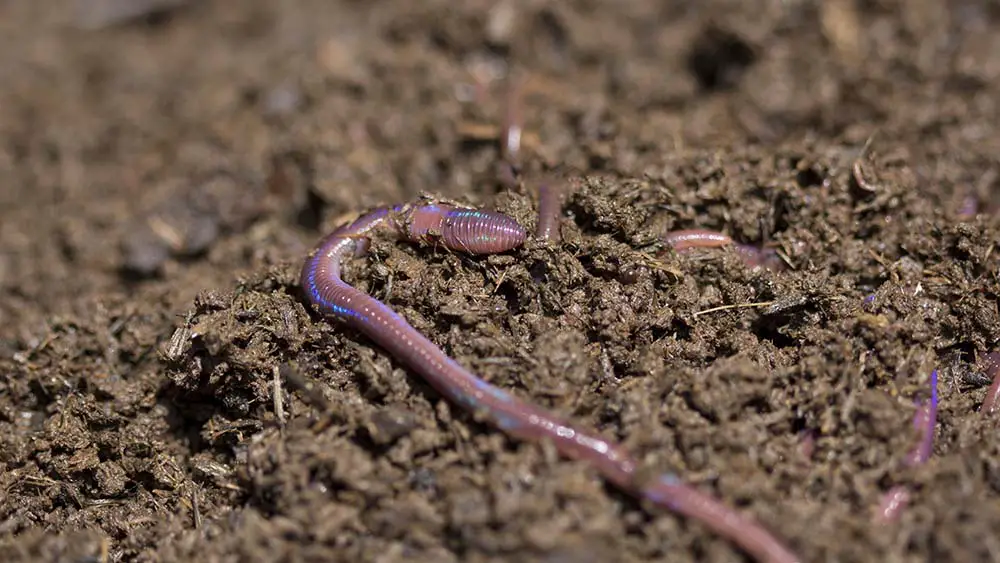
Why is drainage important for fruit trees?
If a fruit tree’s roots are suffocated by soggy soil and a lack of free-flowing air, it isn’t able to absorb the nutrients it needs from the soil. This causes a nutrient imbalance in the tree, leading to yellowing, wilting, or falling leaves.
When standing water fills in all of the air spaces in the soil, tree roots can’t get enough oxygen. A tree can actually suffocate if water takes too long to drain from the soil. Saturated soil also allows harmful pathogens to grow and flourish, which can lead to root rot or other diseases.
Water draining too quickly through the ground leaches nutrients from the soil, again causing a nutrient imbalance for the tree. If a fruit tree is stressed by a lack of water or nutrients, the first thing it will do is drop its fruit to conserve energy. Fruits may also crack or shrivel in response to stress.
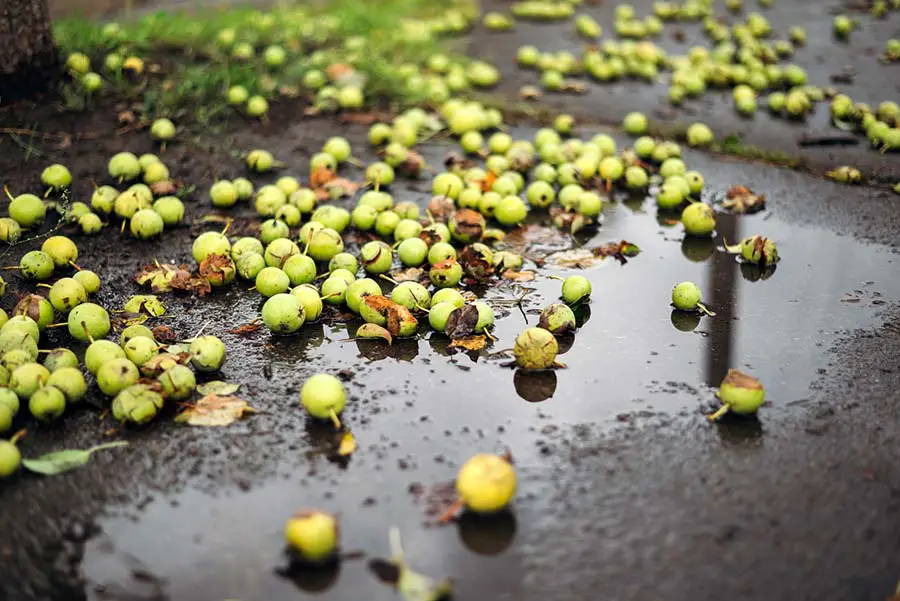
Fast-draining soil means there is not enough organic matter present to hold on to moisture long enough for the roots to absorb it. Organic material holds and releases moisture over time (like a sponge), and even a small increase in organic matter can hugely improve how much moisture the soil can hold. One study found that if the amount of organic matter in sandy soil increases by just 2%, its water-holding capacity more than doubles.
In either poor-drainage scenario, the result is – stress! At the very least there will reduction in the quality and quantity of fruit the tree produces. The plant’s vigor will slow and growth will be stunted. And, under prolonged stress, the tree will eventually die.
Signs of a Drainage Problem
Here are a few things to look for if you’re concerned about your garden’s drainage:
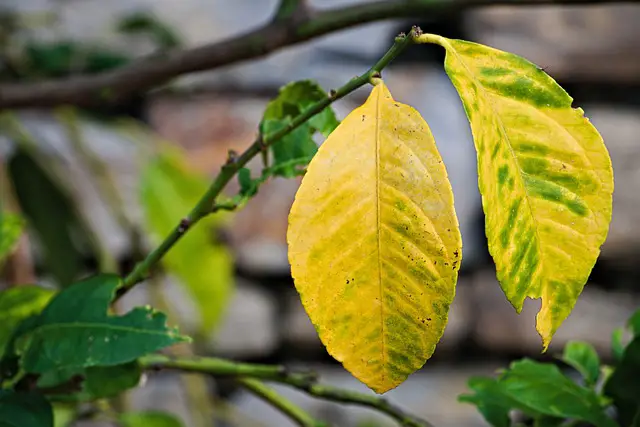
- Water sits for a long time (many hours) after heavy rainfall or irrigation (especially in low-lying areas in your yard or garden).
- Once the soil dries out, it becomes rock-hard (an indication of clay soil).
- Water runs off the soil surface quickly before being absorbed, or soil washes away in a heavy rainfall.
- The plant looks stressed or wilted.
- Leaves yellow (slow drainage) or turn brown and crisp (fast drainage)
How to Check Your Soil Drainage
A simple soil drainage (percolation) test can help you determine if your planting area has drainage issues.
- Use a shovel to dig a 1-foot by 1-foot hole. Fill the hole to the top with water and allow it to drain completely (this may take several hours or overnight).
- Once the water has completely drained from the hole, fill it with water again.
- Check back every hour to measure how far the water has drained. For accurate measuring, suspend a dowel or stake horizontally across the top of the hole. Each hour, measure the distance from the top of the water to the bottom of the stake.
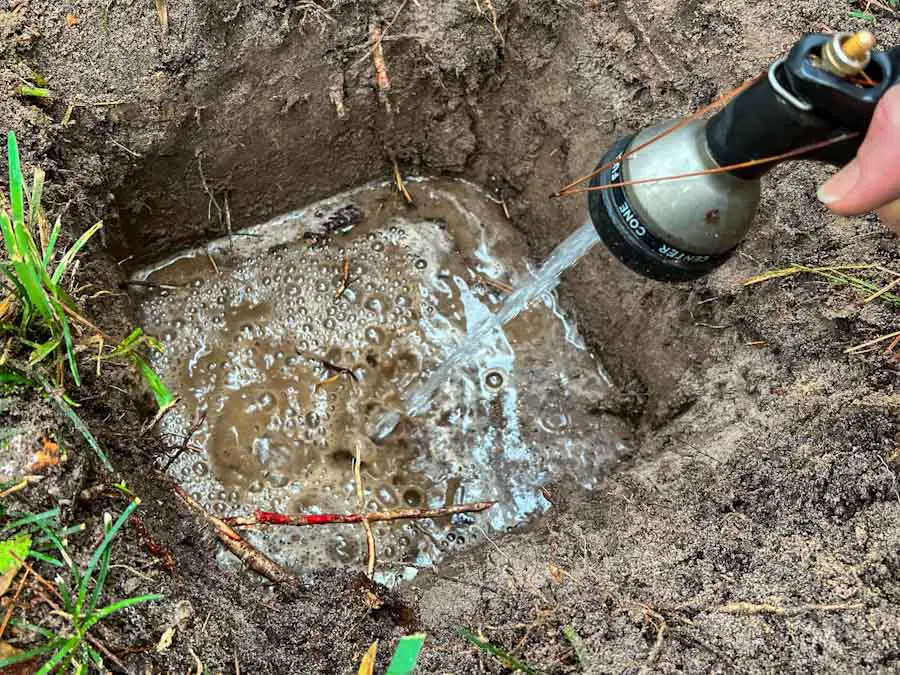
If the water drains less than 1 inch per hour, then the drainage is too slow. Slow drainage could be due to compaction, a high water table, a high percentage of clay, or some other obstruction in the soil.
If the water drains more than 4 inches per hour, then the drainage is too fast. Very sandy soil, or soil with too little organic matter could be the cause of fast drainage.
Ideally, the water should drain about 2 inches per hour (or between 1 and 3 inches) – this is considered well-drained soil. If drainage is good, all of the water in the hole should be gone in the span of 8 hours.
Watch the following video to see exactly how I did this simple soil drainage test in my own yard!
Planting Fruit Trees in Poorly-Drained Soil
Adding organic matter will greatly improve both slow- and fast-draining soil. Organic matter aerates close, compacted soil and helps loose soil retain moisture. It also feeds the soil microbiome and provides nutrients that will then become available to surrounding plants.
There are many options when it comes to adding organic matter to soil, and using a combination of materials ensures a wide range of benefits. The following are some of the most common:
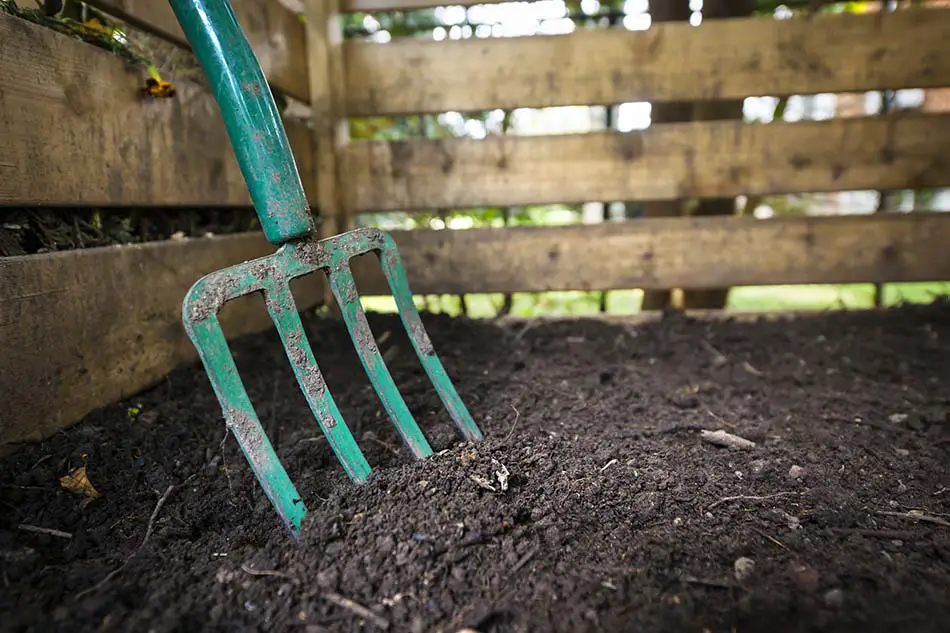
Compost
Compost is made up of decomposed organic matter such as leaves, plant trimmings, or food scraps, and even animal byproducts like worm castings and poultry manure. Completed compost is exactly that – completely decomposed. Adding any sort of good-quality compost to your soil will help with water infiltration (movement through the soil) as well as water retention (holding on to moisture and releasing it slowly).
Shredded leaves
It’s pretty simple to collect leaves when they fall, then save them to later use as a soil amendment or mulch. You can store the leaves in a wire enclosure to use throughout the season. Shredded leaves will decompose more quickly – rake them into a pile, then run over the leaves with a lawn mower. Collect the shredded leaves to compost or use as mulch.
Composted manure
Fully decomposed manure fits into the category of compost, but it’s worth talking about separately. Cow, chicken, horse, sheep, or goat manure can all be safely composted and used as a soil amendment. Be sure the manure is very well-rotted before digging into a planting hole.
Conifer bark fines
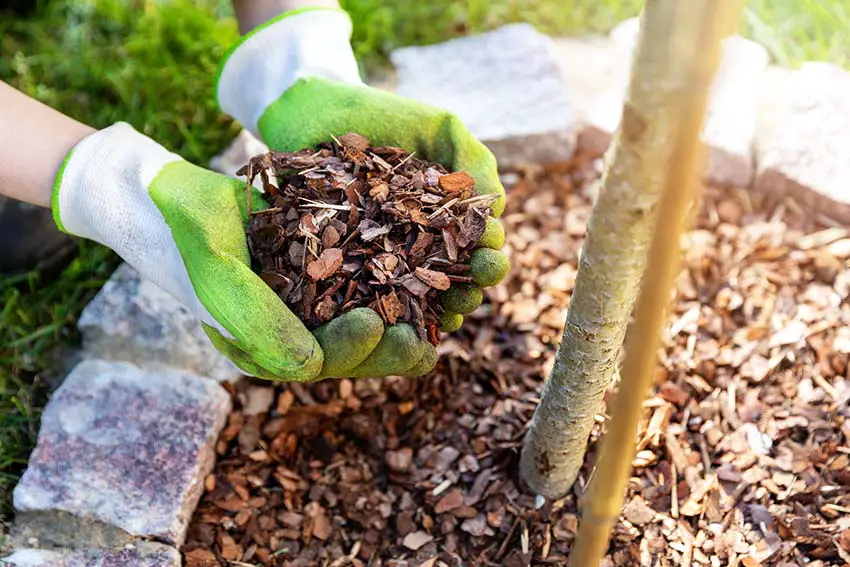
Small pieces of pine, fir, or other conifer bark make an inexpensive and effective soil amendment. The relatively large size of the particles improves soil aeration and drainage. Bonus – as the bark breaks down it can lower the soil pH.
Learn more: Soil pH for Fruit Trees: Why It Matters and How to Adjust It
Sphagnum peat moss
Peat moss is decomposed material from peat bogs. As a soil amendment, it’s used to add water retention to fast-draining soils. Peat moss is also high in acidity and can lower soil pH over time as it breaks down. Consider using peat moss sparingly, however – since the process of forming peat moss has happened over centuries, it’s not a very sustainable material.
Amending Soil at a Planting Site
Dig a hole at least three times as wide as the root ball of the tree, and a little deeper than the root ball (at least a foot deep for most trees). As you dig, place the native soil in a wheelbarrow or on a tarp alongside the planting hole.
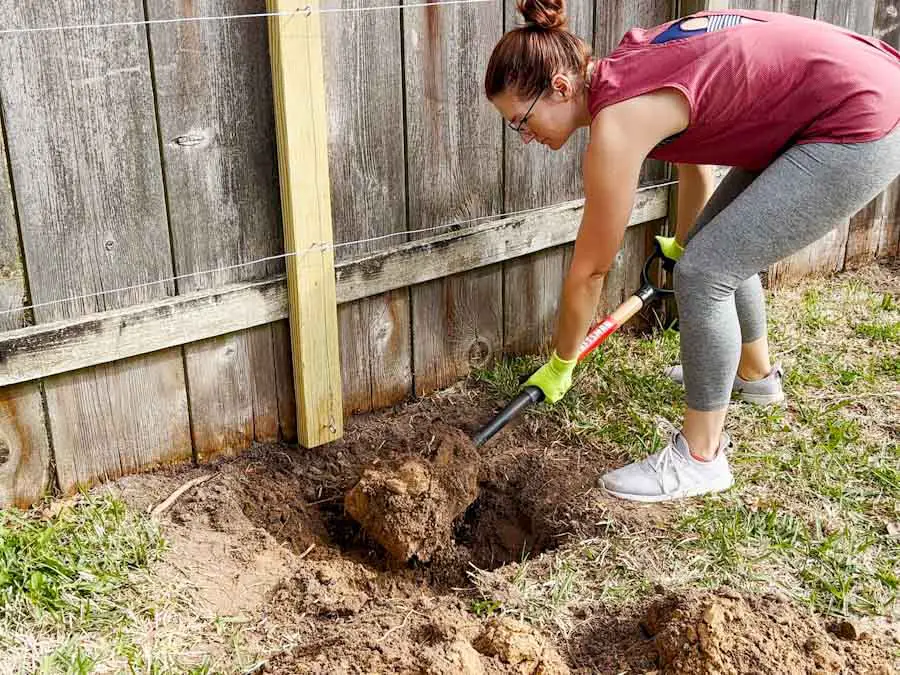
Mix the organic matter amendments with the dug-out soil. Add up to 50% organic matter to the soil removed from the planting hole – in other words, the soil mixture should be at least half native soil.
It’s important to keep a healthy amount of native soil present, as eventually the roots will reach beyond the initial planting hole. The tree must be acclimated to the surrounding soil.
After placing the tree in the hole, backfill with the amended-native soil mixture. Tamp down gently around the root area to remove large air pockets, and water the new tree thoroughly.
Planting in slow-draining soil
It’s good to remember that clay in and of itself is not bad. Clay is an important water-retaining element of the ideal loamy soil, after all. But if slow drainage is due to a high percentage of clay in the soil, then amending is just one of the options to solve the problem.
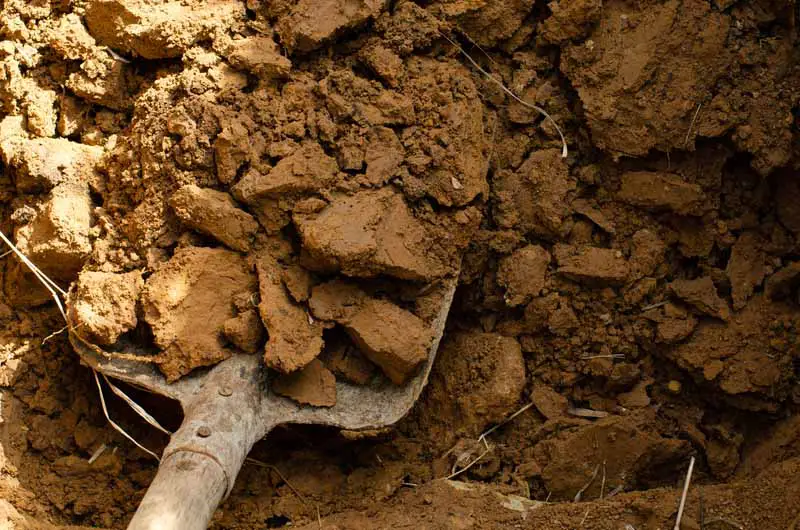
It may be tempting to add sand to clay soil, but don’t do it. Sand may break up the clay a bit, but will actually make compaction and lack of drainage worse. The tiny loose sand particles will fill in the few air spaces that may be available, making it even harder for water to penetrate through the soil.
To de-compact clay soil, loosen it with a garden fork. If you know your soil has a lot of clay, don’t walk around the area when it’s wet, as this can make the soil compaction even worse.
Does gypsum improve soil drainage?
Gypsum (calcium sulfate) is often touted as a cure-all drainage- and soil-structure-improving soil additive. However, contrary to the claims on the packaging, gypsum is only effective at improving drainage under very specific soil conditions (which most of us don’t have).
Gypsum can drastically improve heavy clay soil that is high in sodium, but low in calcium and magnesium. Soils like this often exist in coastal regions or arid areas with low rainfall.
The lack of calcium and excess sodium disperses the clay, filling every tiny air hole and making it hard for water to drain through. Gypsum’s calcium displaces the excess sodium ions, allowing the built-up sodium to wash away with deep irrigation. The resulting soil clumps better, which allows water to drain better (source).
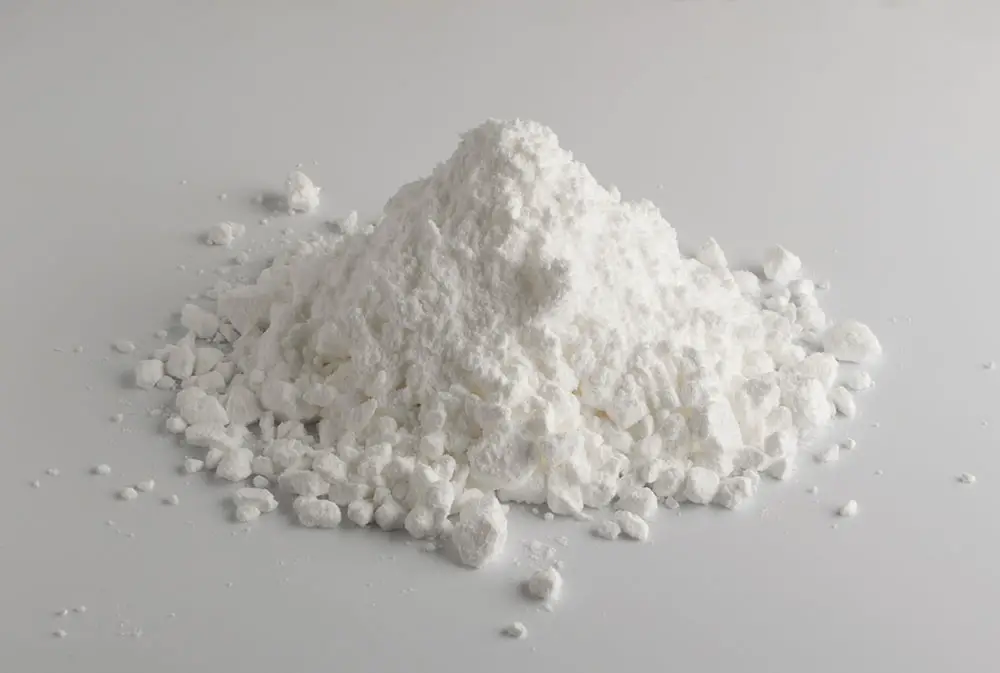
However, unless your soil fits the above characteristics, gypsum won’t do much to improve soil structure and drainage. Adding calcium sulfate when it’s unnecessary may even harm the soil’s ecosystem. Perform a soil test to find out the content of sodium, calcium, and other elements.
Either contact your local extension service for soil testing information or use a simple mail-away service like SoilKit. SoilKit is inexpensive, easy, and fast, and they give you thorough information on your soil composition and recommended addendums or fertilizers for your specific planting site.
Planting Fruit Trees in a Mound or Raised Bed
If your soil is mostly clay, amending alone probably won’t make enough difference to help a fruit tree. Once the tree’s roots grow past the amended soil in the original planting hole, they will be unable to penetrate the barrier of saturated, claggy clay soil that surrounds it.
The other problem is that water wants to stick to itself (cohesion). As the water flows through the amended soil and reaches the unamended clay, it resists the new soil material and stays pooled around the bottom of the planting hole without draining away. This is called a perched water table, and it’s the same reason it’s a bad idea to put rocks at the base of a potted plant (read more about why here).
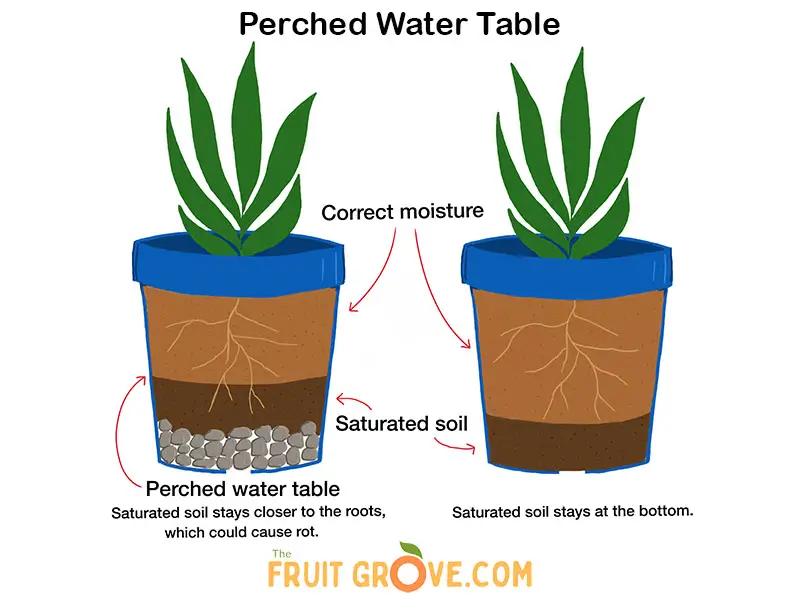
The best option for heavy clay soil is to plant fruit trees in a mound or a raised garden bed. Fruit tree roots can go deep, so for best results, amend the top 12 inches of the planting area by digging in compost or other organic material, so there is a gradual transition to the native soil.
Then pile up a large mound or ridge of soil (half native soil and half compost) on top of the amended area. This should give the tree roots enough room to get the water and nutrients they need before reaching the barrier of clay soil. Plant the tree so the root ball is elevated above the surrounding ground level.
You can also plant fruit trees in traditional bordered raised garden beds to combat poor drainage. Both of these methods work best with dwarf or semi-dwarf fruit trees since their root system will stay smaller than a full-size tree.
Planting in fast-draining soil
If your soil drains too fast – congratulations. This is much less of a problem than slow-draining soil. There is no obstruction to root growth – other than the lack of nutrients and water retention in the surrounding soil.

For fast-draining, sandy soil, organic matter is the simplest and most important step to improve drainage. Digging up to 50% organic material into the native soil will drastically help water retention.
One caveat – you will probably need to water and/or fertilize your fruit trees more often than those planted in loam. Even with added amendments, water will still pass easily through the surrounding soil and leach out nutrients.
I have very sandy soil in my yard and garden. In general, my fruit trees are very happy not having “wet feet,” but I do need a regular fertilizing regimen to provide the nutrients they need. I also have to frequently supplement water during hot, dry spells in summer.
Mulching around fruit trees will help minimize water loss through evaporation, which is especially important if the soil drains quickly. Anything you can do to keep moisture in the soil for as long as possible is a good idea.
Fixing Drainage Under Already-Planted Trees
Soil drainage issues under already planted fruit trees or plants are a little trickier. If you notice signs of water-draining issues around a still-young tree, the best solution is to dig it up and relocate it to a new spot. Different parts of your yard may have different soil, so the drainage may be vastly better somewhere else.
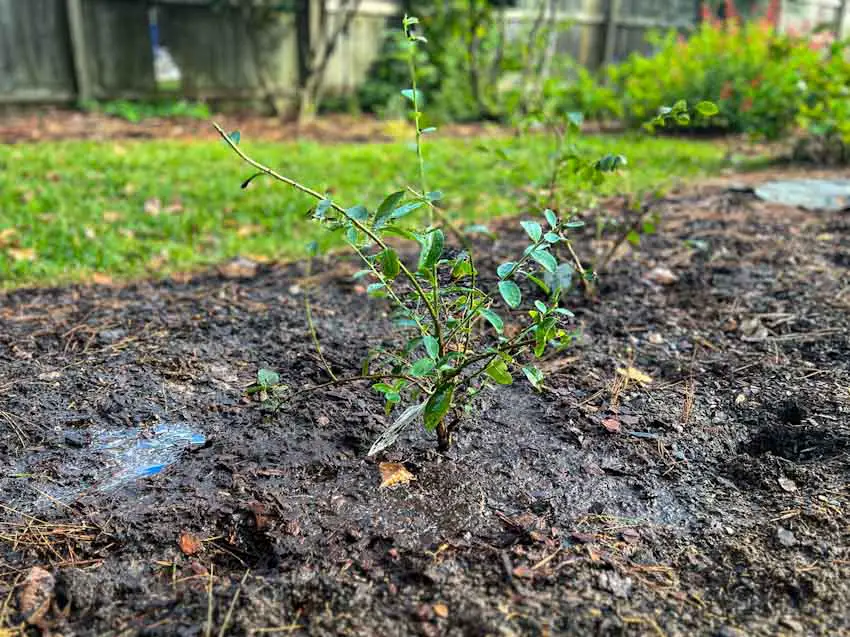
If drainage is poor throughout the yard, try re-planting in a raised bed or mound as described above. In extreme cases, a French drain (drain tile system) may need to be professionally installed to divert excess water out of the soil.
For more established trees that are too large to move, you have fewer options. If the ground slopes away from the tree, try digging a shallow trench (like a creek bed) lined with gravel or stones to funnel water away from the root area.
If the soil around an established fruit tree drains far too fast, a layer of compost around the tree will help improve the soil structure over time. Move aside any mulch and lay compost on top of the soil around the tree, starting several inches away from the trunk and extending out beyond the tree’s dripline. Gently work the compost into the top few inches of soil, if desired.
Speaking of mulch – spread some mulch around the tree! As discussed above, mulch has multiple benefits for fruit trees, including helping the soil retain more moisture.
What fruits grow well in poorly-drained soil?
Just about every fruit plant needs well-drained soil, but there are some that can tolerate longer periods of soggy, saturated, or flooded ground. One of the best ways handle a poor soil situation is simply to choose fruit trees that can do well in the conditions you have!
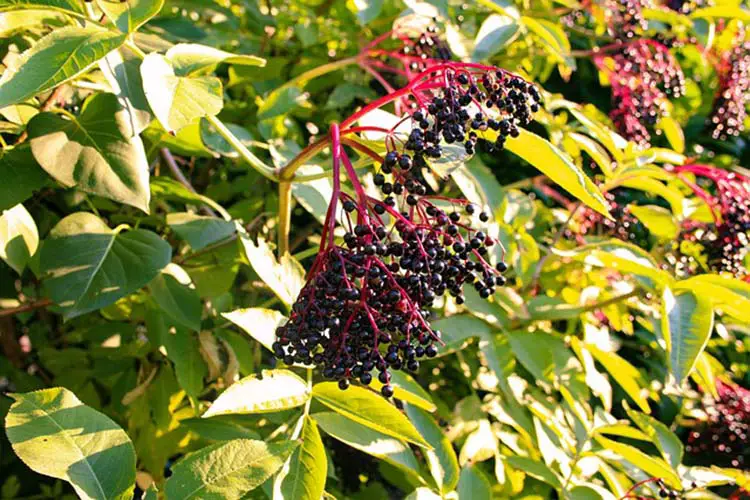
The following are some fruit trees and plants that can tolerate somewhat wet, poorly drained soil:
- Hawthorn
- Pear
- Guava
- American persimmon
- Coconut
- Sapodilla
- Cranberries
- Pecans
- Quince
- Pacific Crab Apple
- Elderberries
- Pawpaw
- Wild plum
- Black currant
Certain fruits will grow better in areas with dry, sandy soil that has trouble holding on to moisture. This doesn’t mean that they don’t need water! A lack of water could affect fruiting, among other things, but these fruit trees and plant can tolerate longer periods of drought.
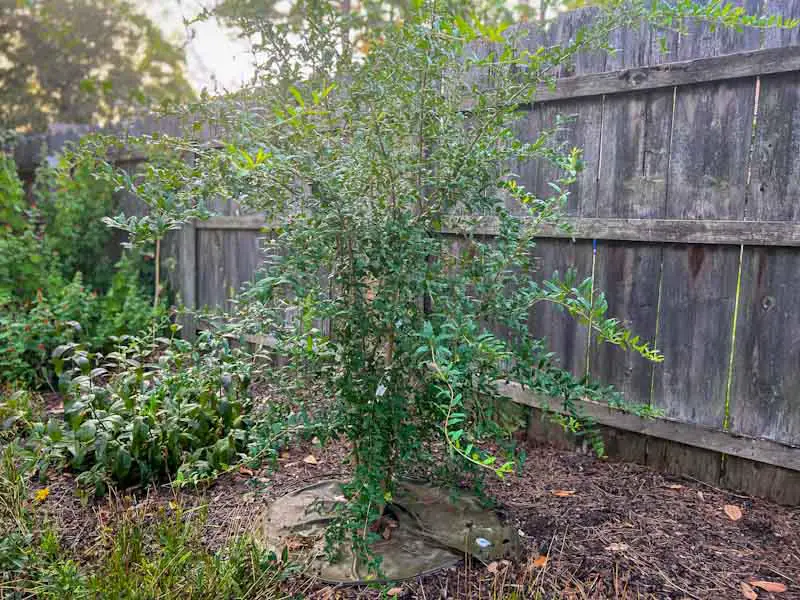
Grow these fruits and nuts if you have dry soil that drains too quickly:
- Figs
- Stone fruit (peaches, apricots, plums, cherries)
- Pomegranates
- Citrus
- Jujubes
- Dragon fruit
- Wine grapes
- Asian persimmons
- Feijoa (pineapple guava)
- Guava
- Date palm
- Olive
- Prickly pear
- Almond
- Pistachio
- Mulberries
- Serviceberries
- Pears

